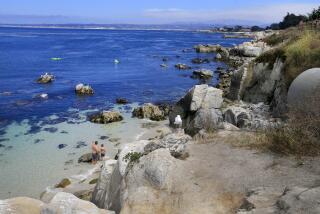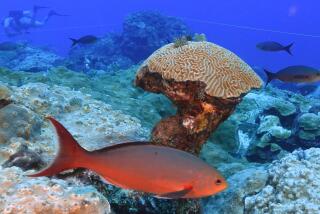Dead coral found near BP well site
- Share via
Scientists on a research cruise this week found a community of dead and dying deep-sea corals not far from the site of BP’s blown-out wellhead.
“Within minutes of our arrival … it was evident to the biologists on board that this site was unlike any others that we have seen over the course of hundreds of hours of studying the deep corals in the Gulf of Mexico over the last decade,” Penn State University biology professor Charles Fisher and the cruise’s chief scientist said in a news release.
A colony of hard coral at a depth of more than 4,000 feet was sloughing off tissue and producing mucus, while a nearby community of soft corals had extensive bare areas. A type of starfish associated with the coral was also in bad shape.
Using a remotely operated robotic vessel, government and academic researchers on the federal ship Ronald H. Brown were surveying coral communities they have studied for several years. Most showed no changes from previous visits.
But when the ship crew focused underwater cameras on colonies seven miles southwest of the BP leak, images of stricken corals, covered with a brown substance, popped up on the screen.
The researchers will analyze sediment and coral samples for evidence of hydrocarbons and the chemical dispersants used to break up the crude that spewed for months from BP’s Macondo wellhead before it was capped in July.
Fisher said the lab results may not be conclusive. “A plume of toxic dispersant or oil blowing through this community could have caused damage that resulted in the slow death of the corals without leaving any trace on the seafloor near the corals,” he said. “No one even knows if dispersant accumulates in the tissues that it kills.”
But the circumstantial evidence all pointed to the massive oil leak as the prime suspect. The coral community was not far from the spill site, was at the right depth and in the right direction to be hit by an oil plume, and was damaged recently.
“These observations capture our concern for impacts to marine life in places in the gulf that are not easily seen,” Jane Lubchenco, head of the National Oceanic and Atmospheric Administration, said in a statement.
More to Read
Sign up for Essential California
The most important California stories and recommendations in your inbox every morning.
You may occasionally receive promotional content from the Los Angeles Times.











